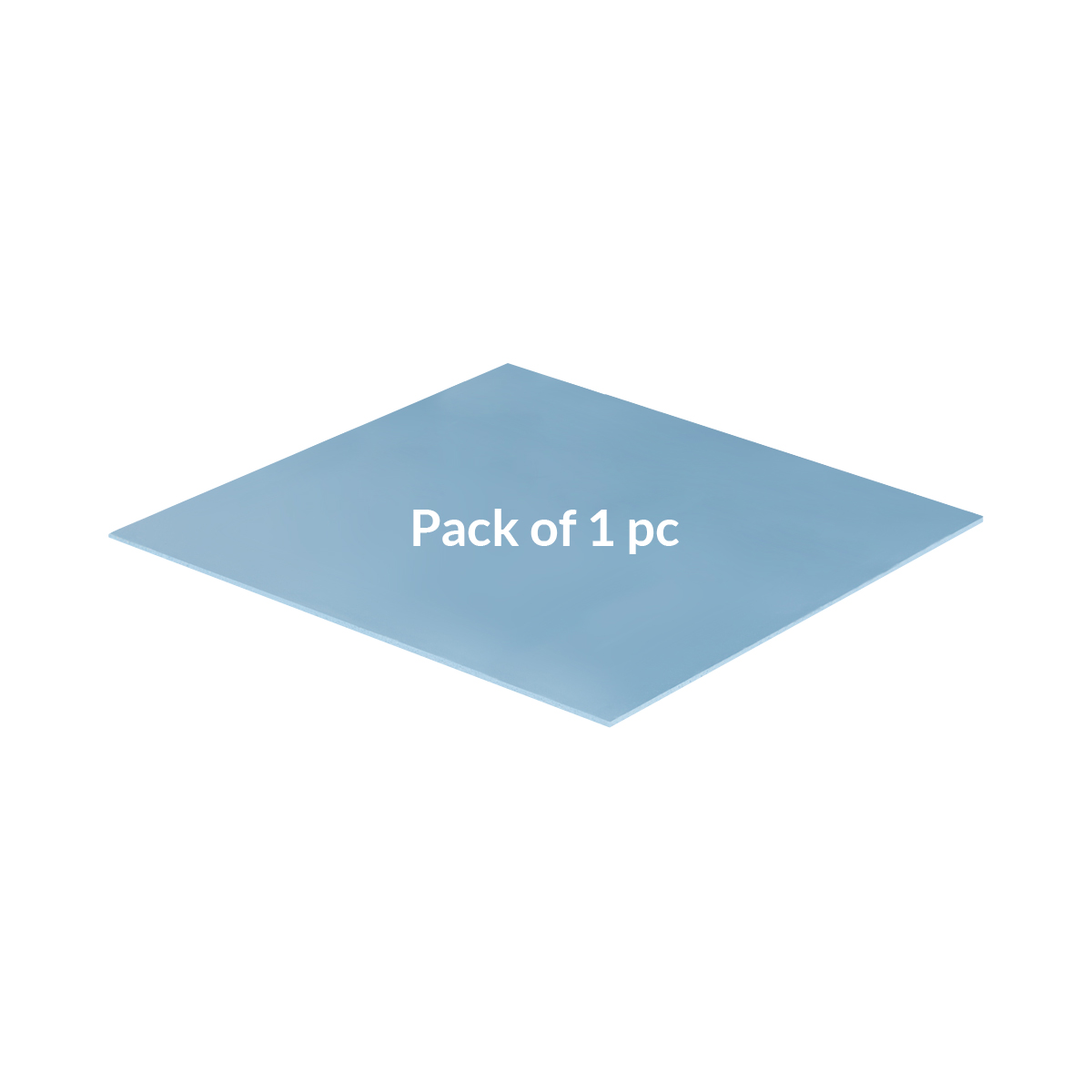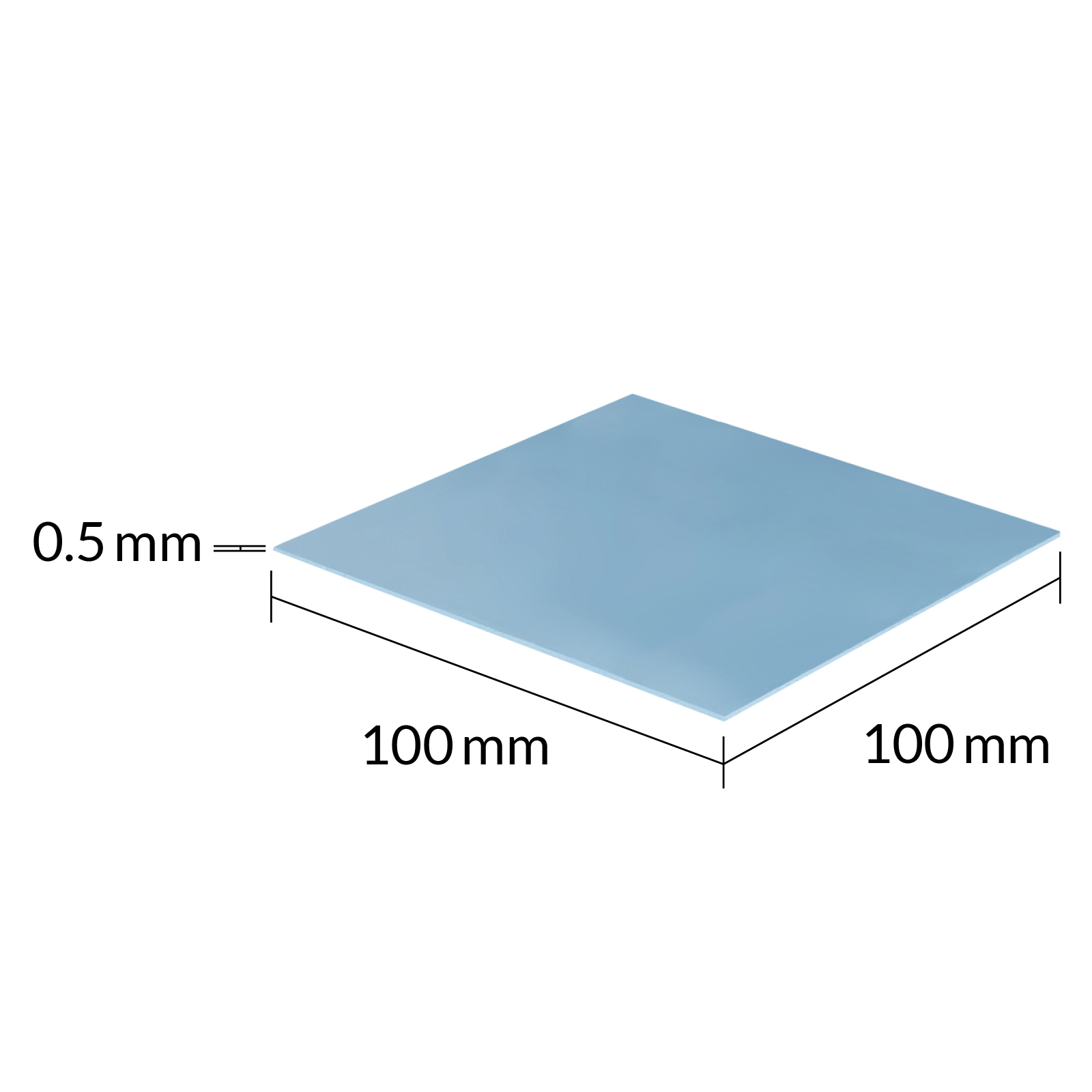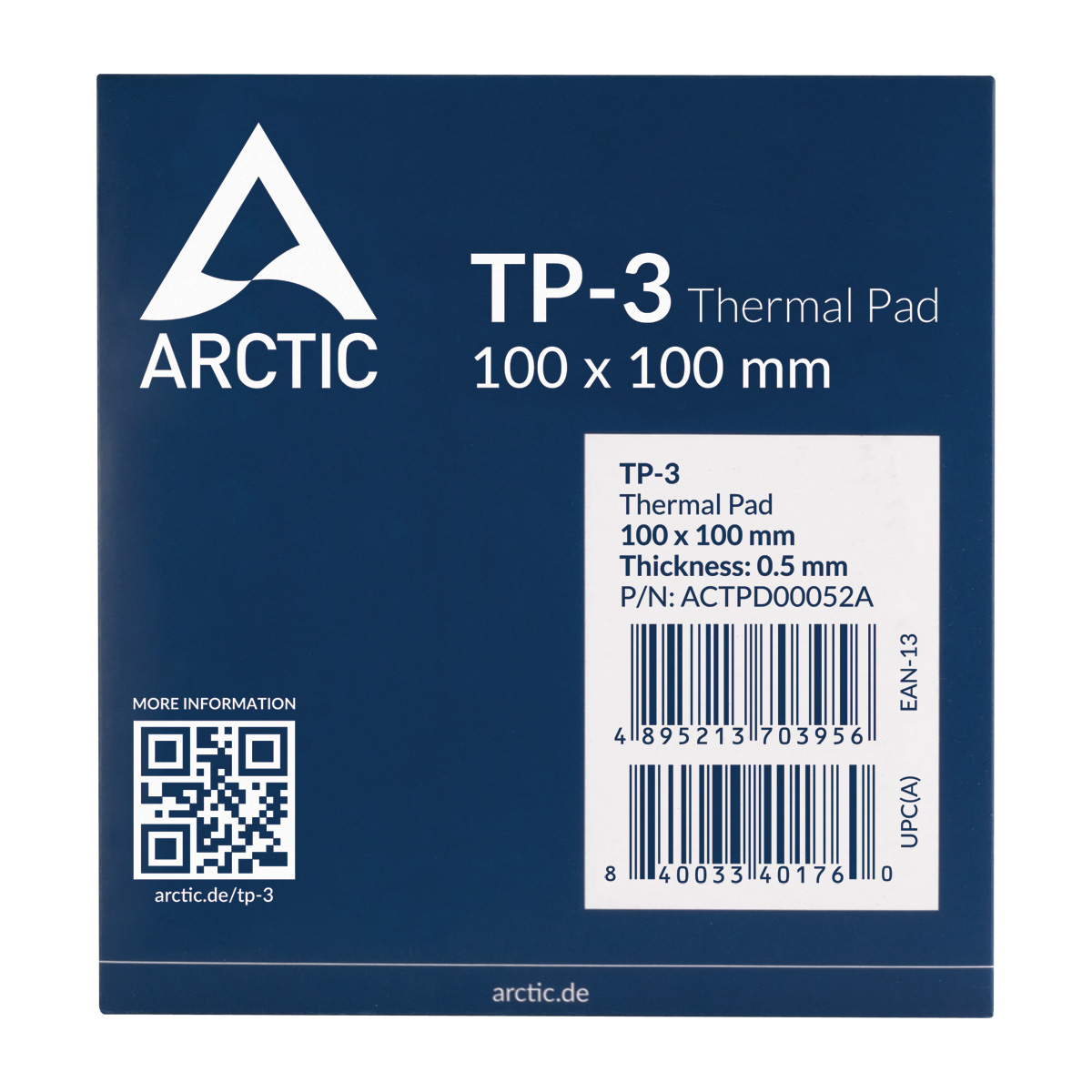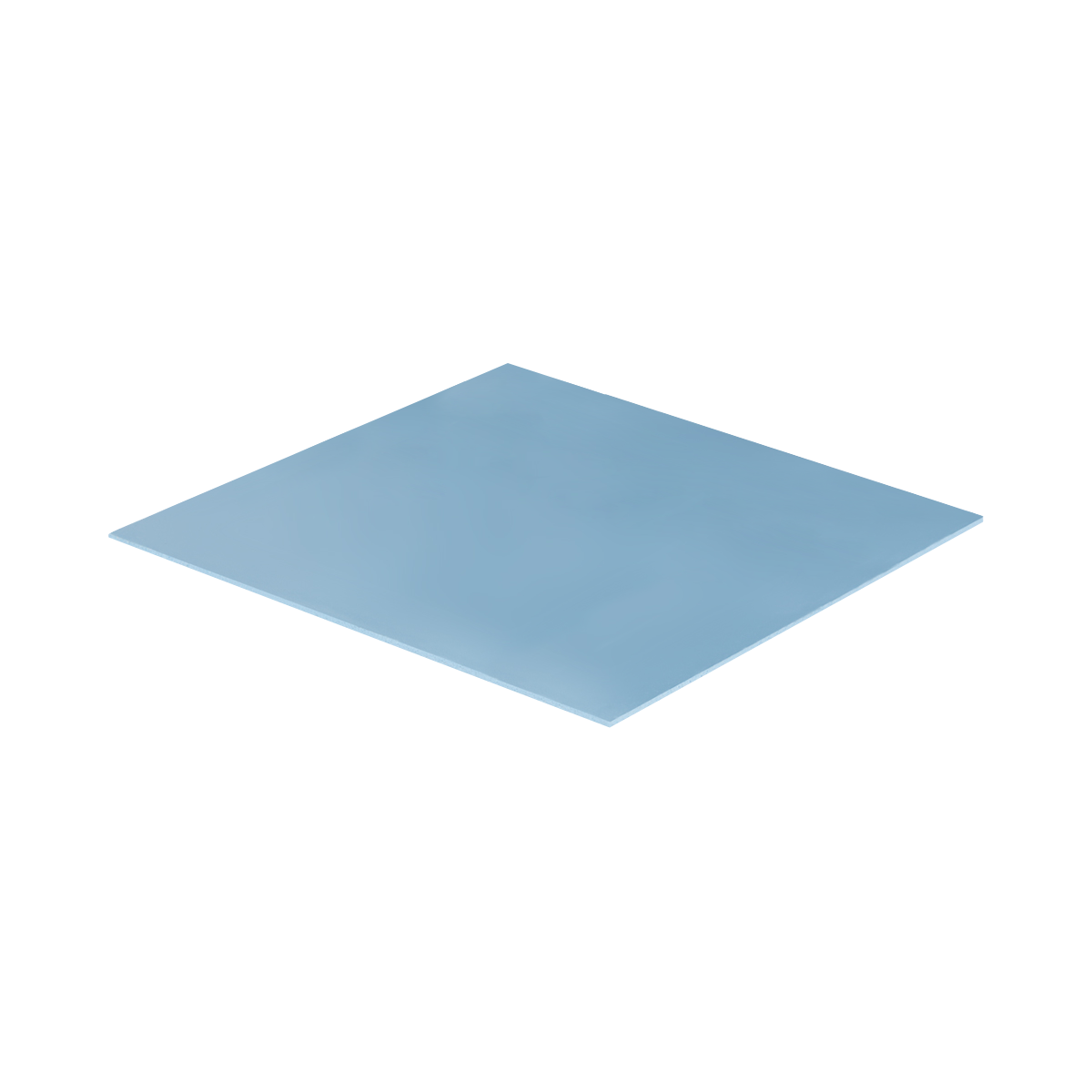
High Performance — Very Soft
Based on silicone and a special filler, TP-3 outperforms high-performance pads, especially when height differences of closely spaced chips typically occur due to manufacturing tolerances. The TP-3 offers excellent thermal conductivity despite extremely low hardness.
How is tested?
A 25×25 mm sample of the 1 mm thick variant of the respective thermal pad is clamped between a heating element and a copper heatsink, and thereby pressed to 0.8 mm. The heating element is heated till it reaches a constant temperature of 80 °C. The heat output required for this and the temperature difference between the two elements are used to calculate the thermal resistance.
Minimization of Thermal Resistance
The thinner the pad, the lower the thermal resistance. The TP-3 pad with a thickness of 0.5 mm can easily be compressed to 0.3 mm and thus compensate for height differences between various components of up to 0.2 mm. Please note that due to the extremely low hardness, the installation of the 0.5 mm pad requires extra care. Please refer to the user manual.
Versatile Applications
Heat-conducting, vibration-damping, mouldable, electrically insulating — safe and easy to use. Thanks to its good compression properties, the soft heat conduction pad is particularly gentle on components and at the same time a good heat conductor. In addition to the standard format for M.2, the TP-3 is available in various sizes and thicknesses, which can be easily cut to the desired shape and size. This makes it ideal for RAMs, chipsets, and ICs of all kinds, which are used in PCs, laptops, consoles, graphics cards, and electronic devices in general.
Bridging Gaps
The TP-3 is softer than conventional pads and therefore particularly suitable for different chip heights and possible tolerances. Thanks to their good compressibility properties, the thermal pads act as the perfect gap filler and bridge uneven surface and air gaps without stressing sensitive and protruding components.
Available in Different Thicknesses and Sizes
Our thermal pads are available in a choice of 0.5 mm, 1.0 mm, and 1.5 mm. The 0.5 mm variant is ideally suited as an alternative to heat-conducting foil. The pads are available in different dimensions, depending on their thickness. If required, the pads can also be independently cut to any size.
Technical specifications & manual
- Width: 115 mm
- Height: 1.5 mm
- Length: 120 mm
- Weight: 0.031 kg
Manufacturer: ARCTIC (HK) Ltd., Unit 1301-05, The Octagon, 6 Sha Tsui Road, Tsuen Wan NT, Hong Kong, hk@arctic.de
EU Representative: ARCTIC GmbH, Bevenroder Str. 149, 38108 Braunschweig, Germany, info@arctic.de, +49 531 60945294
Product gallery


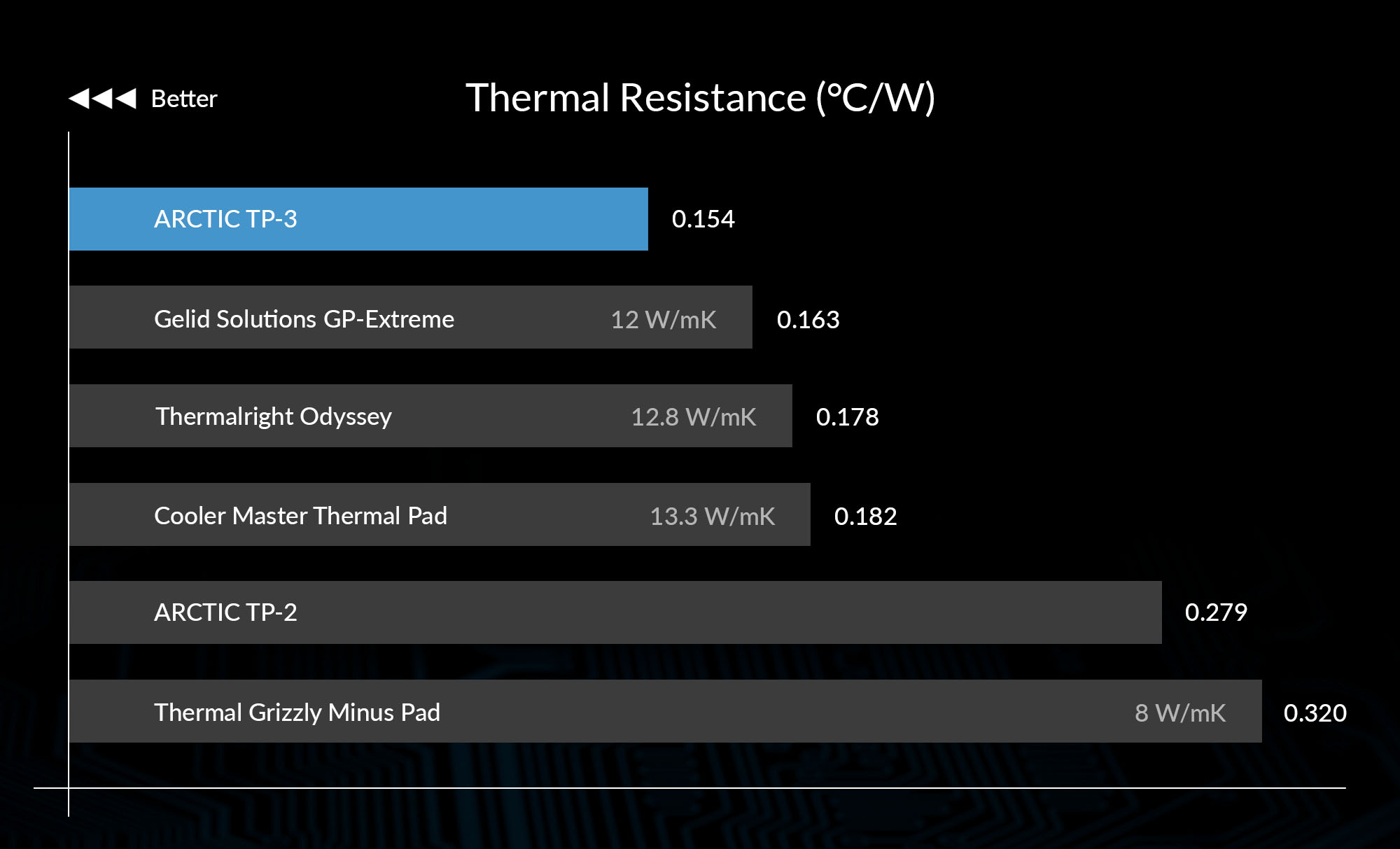
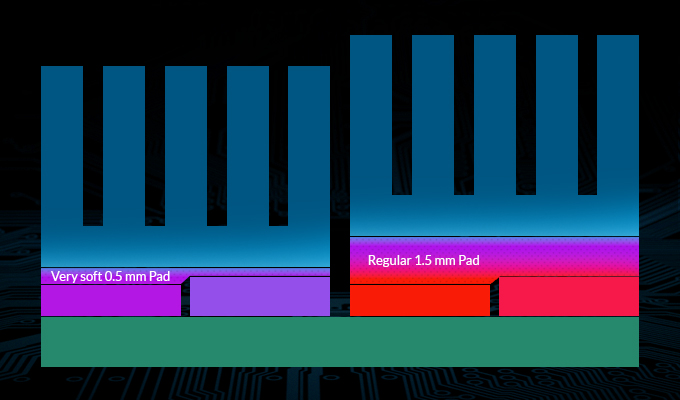

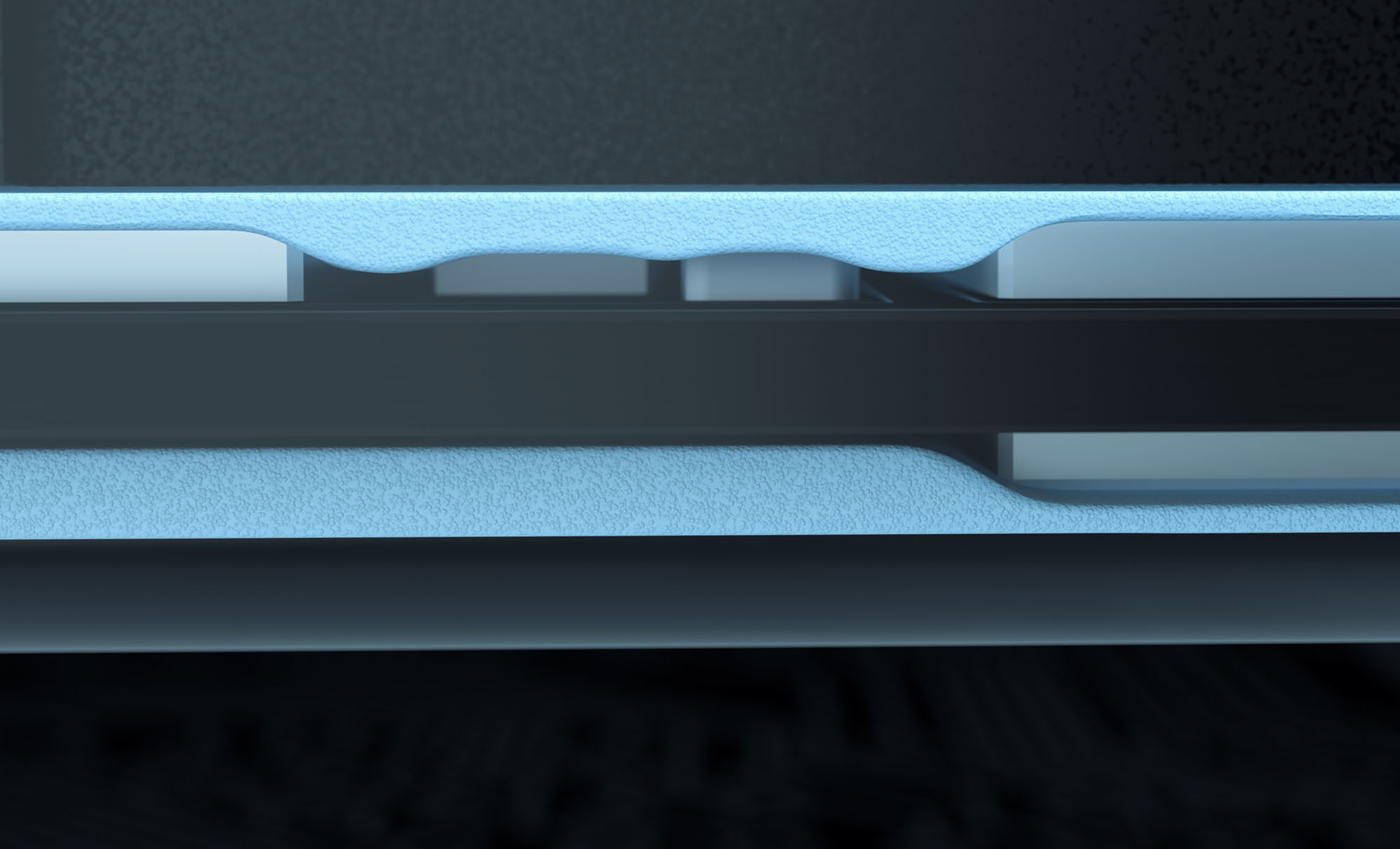
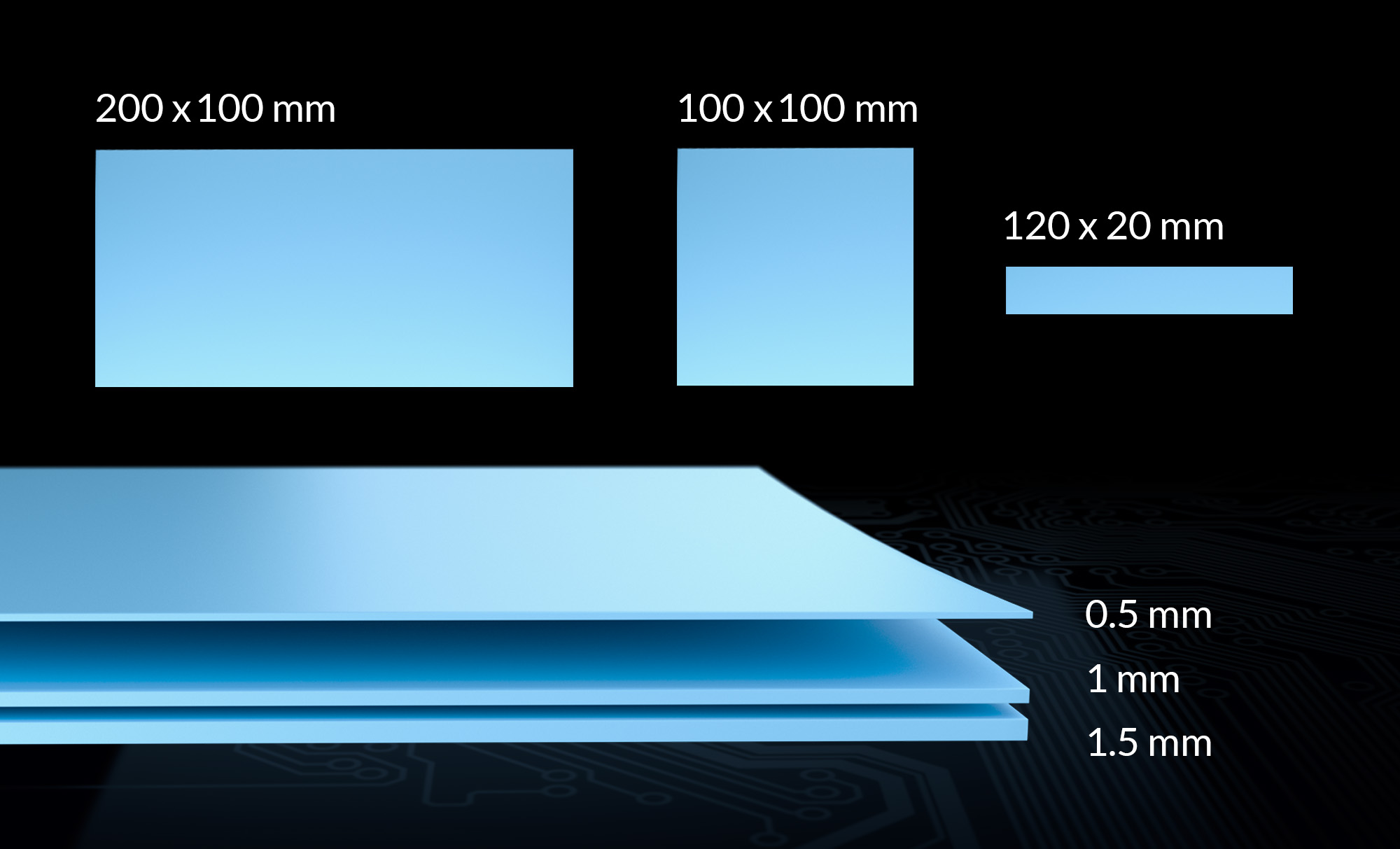




 Spec SheetPDF
Spec SheetPDF